Table of Contents:
Earl Hines – Earl “Fatha” Hines (1903-1983)

Earl Kenneth Hines, (Duquesne, Pennsylvania, December 28, 1903, Oakland, California – April 22, 1983), went to school in Pittsburgh, at the same time that he served as a pianist in nightclubs.
Best Sheet Music download from our Library.
Already in 1922, Earl Hines began to live in Chicago; six years later he founded his first band and worked in the group of trumpeter Louis Armstrong, where he was the musical director of his group, “Louis Armstrong Stompers” and also with the clarinetist Jimmie Noone at the Apex Club in 1928. Subsequently, he collaborated with Armstrong at the piano in the rhythms of the group that made the great trumpet player become the creator of modern jazz, the “Hot Five”, the first one and then expanded to the “Hot Seven”.
During the thirties, his band came on the radio of the United States through the program that Hines had. Many important figures in the jazz world played with the band of Earl Hines, among them the saxophonist Charlie Parker and trumpeter Dizzy Gillespie.
In 1947, the group disbanded; during the four years following Hines worked again with Louis Armstrong, this time in her band called, “All-Stars”. Also known with the pseudonym of ‘Fatha’, Earl Hines differed from other pianists of the 20th century for his innovative contribution of rhythms and accents he took to the instrument, which at that time were considered to be rare and heterodox.
Earl Hines, he remained during the whole of that decade, leading and influencing all the pianists in jazz of its time that they saw in him, the link between the piano jazz classic and the modern. In the fifties, Hines saw decline, its star and retired to play the piano in a small club owned in Oakland (California) where he resided.
But in the sixties, following the signing of the contracts in the city of New York in 1964, Earl Hines was recovered for the jazz, and he resumed his career already at full maturity with great success.
At that point Earl Hines had assimilated some of the traits of some of their talented disciples, as was Teddy Wilson, and the scene expressed an inspiration without limits. Earl Hines – considered the “father of jazz piano”, hence his nickname of “Fatha“- died with the boots set an April 22, 1983.
Please, subscribe to our Library. Thank you!
Earl Hines and “Rosetta”
One of the proudest moments of Earl “Fatha” Hines’s career took place in 1976, when he was invited to perform at a White House dinner in honor of the President of France. After an evening chatting with Betty Ford and Clint Eastwood, Hines sat down at the piano in the East Room and launched into “Rosetta.”
“Rosetta” had been composed by Hines and his arranger Henri Woode over forty years earlier. That the pianist chose this tune for such an occasion, and at this late stage of his career, says much about its prominence in his life. Only “Boogie Woogie on the St. Louis Blues” held the same pride of place in Hines’s performances.
He revisited “Rosetta” hundreds of times, in solo performances, with vocalists, and with groups of varying sizes. But though the association of a jazz musician with a “signature” tune is not unusual, Hines’s relationship with “Rosetta” was complex and unique. On October 6, 1939, at the end of a lengthy band session for the Bluebird label, Hines recorded four solo versions of “Rosetta.”
Only the third take was issued at the time, coupled with Hines’s solo version of “Glad Rag Doll,” recorded ten years earlier. The first two (rejected) takes are presumed lost, but the fourth was included many years later on an LP reissue by RCA-France.
The two available performances, placed side by side, capture Hines’s relentless virtuosity and innovative musical mind, and provide a fascinating example of how a jazz musician can revisit the same melody and chord structure from two perspectives. But the recordings also raise larger issues of context, for they are closely linked both to the tune’s creation and subsequent performance history and to Hines’s working life as one of the most gifted band pianists of his generation.
In addition, Hines’s 1939 versions of the tune dramatically capture the ways in which he had, in less than a dozen years, revolutionized the very genre of the piano solo. The nature of the two solos also raises intriguing issues about the place of transcription in jazz research.
Much of my discussion here is rooted in a study of my own complete transcriptions of these recordings. The incorporation of such scores into the study of jazz is now widely accepted in the scholarly community. Yet, though the use of notated excerpts to illustrate specific analytical points is a familiar aspect of academic discourse, study of complete transcriptions raises additional issues.
When one is confronted with the entire “text” of an improvised performance fixed neatly on the page, it is difficult not to evaluate the score through the aesthetic lens of Western art music. The issue is particularly conspicuous in piano transcriptions, for they can appear deceptively clean.
Although the transcriber must wrestle with rhythms, chord voicings, and other issues, the notes on the keyboard are invariable; unlike other solo or ensemble transcriptions, the reader is not continually reminded of the inadequacies of Western notation to capture bends, growls, scoops, and other jazz techniques related to pitch and timbre.
A complete piano transcription easily lends itself to structuralist interpretation, for it is tempting to evaluate the performance based on the integrity of its overall form: the use of effective contrast between strains or choruses, facility of modulation, pacing of important events, motivic development, and so on.
Yet, though Western aesthetic standards are not wholly inappropriate for a pianist so steeped in the classical tradition as was Hines, his artistry as a soloist must also be evaluated by different criteria. Earl Hines was a pianist who relished testing himself and his audience, a feature vividly captured by Gunther Schuller in his observation that “listening to Hines is always like standing at the edge of a precipice in a heavy wind” (Schuller 1989:284).
Though his solos seem at times to teeter near structural incoherence, this feature is not a symptom of an erratic musical mind nor an inexperienced performer, but is rather the very essence of his improvisational style. Hines’s brinkmanship posed substantial challenges for my role as transcriber, for rarely have we encountered a musical art more resistant to being captured in notation.
Yet, the more time we spend with the highly artificial musical “texts” we have created, the more we are struck that the scholarly and ideological issues surrounding transcriptions may rest less with the process itself (the results of which, as most scholars agree, are highly subjective, pallid representations of the original recordings) and more, as both Ingrid Monson and Paul Berliner have suggested, with how the texts are used to make analytical and aesthetic observations about the improviser’s art (Monson 1996:133-91; Berliner 1994:11-12).
In this article, therefore, it’s suggested that the “Rosetta” transcriptions be used less as “complete works” for study and more as windows into the ways in which Hines engages with and signifies upon the tune, its performing history, and his own musical artistry.
When his work is viewed this way, these two transcriptions provide a fascinating guide, however conjectural at times, to the moment-to-moment unfolding of a great musical imagination.
“Rosetta”‘s story begins in 1932, when Hines (1903-1983) met pianist and composer Henri Woode while on tour in Kansas City. Hines hired Woode as an arranger, and he created several notable showpieces for the pianist’s band, including 1932’s raucous “Sensational Mood.”
As Hines recalled, “Rosetta” was inspired by Woode’s girlfriend: He was crazy about a girl called Rosetta. Whenever I wanted him, or asked the guys where he was, they used to say, “He’s with Rosetta.”
Finally I got a bit mad, and told him to have Rosetta come where we were playing, and she could eat and drink and I’d pay for it. Then he heard a little phrase I made one night on the piano, .and he worked it into a tune we wrote together. We dedicated it to her and called it “Rosetta” and it became a big hit … (Dance 1977:76) The passage suggests that the tune represents a kind of signirying on Hines’s improvisational style. As for the nature of the phrase that caught Woode’s ear, it may be the drooping fourth in mm. 2-3 and 4-5 of the tune’s A section-one of the melody’s most distinctive features (see example 1 for the complete melody line and accompanying harmony).
This idea surfaces occasionally in other improvisations of the same time, where its “open” sound complements the horn-like conception of Hines’s right hand. It is hinted at near the end of the second eight-bar phrase in Hines’s solo on “Sensational Mood,” and more overtly referenced in the third chorus of 1932’s “Down Among The Sheltering Palms” (take 1) (ex. 2).5 (In this and other examples, where noted, I have transposed from the original key to F to facilitate comparison with “Rosetta”‘s original melody line.)
In addition to the descending fourth motive, the passage also suggests the repeated “A” in the fifth and sixth measures of Hines’s tune. The gesture also plays a prominent role in other melodies that Hines wrote or co-wrote, including “A Monday Date” (1928), ”You Can Depend On Me” (1932), “Straight to Love” (1941), and “Am I Too Late?” (1947), inviting speculation that these tunes also grew out of improvisations.
The tune was submitted for copyright on February 3, 1933. Ten days later, Hines’s band made four takes of it for the Brunswick label, in an arrangement by saxophonist Cecil Irwin. Two of the takes featured an Armstrong-style vocal by trumpeter Walter Fuller, who was so delighted with the success of the number that he later named his daughter Rosetta (Dance 1977:168).
Hines’s group recorded the tune again in November of 1934, in a somewhat updated (and faster) arrangement by bassist Quinn Wilson. In 1935 the tune was formally published by Joe Davis, Inc. in a piano/vocal version, with an undistinguished verse that is rarely if ever played, and the tune began to enter the country’s band repertory. By 1942, it had been featured on twenty-two recordings by other performers (Crawford and Magee 1992:60-61).

All but six of these are instrumentals, a result, perhaps, of rather clumsy lyrics. Most likely because of the tune’s association with Hines, thirteen of these recordings feature pianists in prominent roles. And, significantly, six feature the artists most responsible for shaping the art of the piano solo during the 1930s-Art Tatum and Teddy Wilson. Indeed, besides Gershwin’s “Liza,” “Rosetta” is the only tune both Tatum and Wilson recorded as soloists prior to 1942.

By the time he made his first solo recordings of “Rosetta” in 1939, the tune was a cherished friend. Trombonist Trummy Young, who joined the Hines group not long after the first band recording was made, once remarked that “Earl liked that tune so much we used to play it two or three times a night sometimes.
He just fell in love with the tune” (Dance 1980:40). But though Hines clearly had emotional attachments to the piece, like other musicians he must have also been drawn to its wide range of possibilities. Beyond the distinctive sighing fourth figure in the melodic line, musical details ofthe tune show superb craftsmanship (ex. 1).
Cast in the familiar 32-bar AABA form, harmony, melody, and rhythm work together to create drive to the end of each eight-bar phrase. The first four measures are made notable by the shifting of harmony under a single pitch: in measure 2, under a held C in the melody, the harmony shifts from tonic to dominant with a raised fifth. The inspiration for this effect may have come from Victor Herbert’s “Indian Summer” (1919), a tune Hines returned to frequently in later years (Dance 1977).
The first three bars enrich the F tonality with tension, rather than creating harmonic motion. In the last five bars of each A section, however, both harmonic and melodic rhythm increase in speed. The harmony, beginning with the D7 chord, moves through a series of secondary dominants until the tonic is again reached at measure 7. The idea of shifting harmonies under a single pitch (the A in mm. 5-6) is continued throughout this passage, with the melody line featuring diminutions in the rhythmic pattern.
This tension between melody and harmony is underscored by Quinn Wilson in his 1934 arrangement, in which the brass punch out a new chord at the beginning of each measure. The bridge modulates to the minor iii (A minor), a distinctive move, though not unheard of (a similar key change occurs in “I Never Knew” of 1925 and “More Than You Know” of 1929, among other examples). Recordings suggest that the melody of the bridge was less fixed from the outset.
The Earl Hines band versions present an instrumentally-conceived line that lacks a strong sense of melody, and even in Fuller’s first vocal the trumpeter seems to be making up the tune as he goes along. Certainly, most performances avoid the trite phrasing of the melody as presented in the 1935 sheet music, but this may simply reflect the tendency of Swing Era soloists and arrangers to abandon a tune’s melody at the bridge.
Hines’s two 1939 takes of “Rosetta” are intriguing examples not only of his improvisational approach, but of his recasting of the piano solo, a process he had begun in his revolutionary 1928 solo recordings for the QRS label. Though much has been written about various stylistic trajectories in pre-1940s jazz piano (stride, boogie-woogie, swing, etc.), as well as their important practitioners, less has been made of the evolution of the jazz piano solo as a specific genre-one with its own rules and performance history.
Because pianos can stand alone in performance, a uniquely varied literature and performance practice has developed around them in jazz. Since pianists could duplicate both the role of solo instruments (in the right hand) and the backing of a rhythm section (in the left) they were prized by club owners (or party hosts) with limited funds to spend on live entertainment.
But though their choice of instrument could be financially lucrative, piano soloists also faced the challenge of building a satisfYing, swinging performance without help from other ensemble members, relying on their own ingenuity to achieve variety and their own internal sense of time to maintain tempo and momentum. Still, though these challenges were daunting (and not always adequately met by pianists of the 1920s and ’30s), they also lent the piano solo genre its uniqueness as a self-contained expression of improvisational creativity. A jazz piano solo was (and is) the work of a single imagination, one with complete control over the shaping ofthe event.
Rosetta, by Earl Hines (Piano Solo arr.sheet music)
| Artist or Composer / Score name | Cover | List of Contents |
|---|---|---|
| Stravinsky – Octet for Wind Instruments |
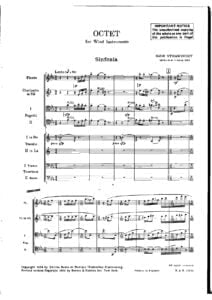 |
|
| Stravinsky – Ragtime (Piano Solo) |
 |
|
| Stravinsky – The Rite of Spring Le Sacre du printemps (4 hands, piano à 4 mains) | Stravinsky – The Rite of Spring Le Sacre du printemps (4 hands, piano à 4 mains) | |
| Stravinsky – The Rite Of Spring – piano 2 hands – arr. by Raphling |
 |
|
| Stravinsky 3 Easy pieces for piano 4 hands |
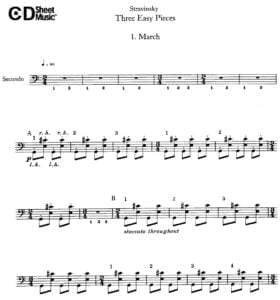 |
|
| Stravinsky 4 Etudes Op.7 |
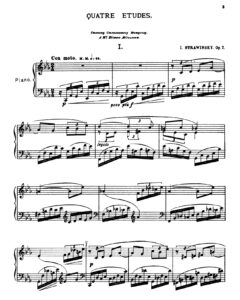 |
|
| Stravinsky And His World by Tamara Levitz (Book) |
 |
|
| Stravinsky Sonata F Sharp Minor |
 |
|
| Stravinsky Symphony of Psalms (arr. piano solo) | ||
| Stravinsky Tango |
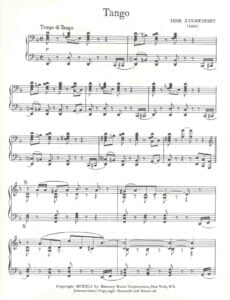 |
|
| Stravinsky The Firebird Piano Transcription |
 |
Stravinsky: The Firebird |
| Stravinsky, Igor 5 Easy Pieces [Piano 4 Hands] |
 |
|
| Stravinsky, Igor – The Rite of Spring Le Sacre du Printemps (piano solo) |
 |
|
| Straylight Run – Existentialism On Prom Night | ||
| Streabbog (Jean Louis Gobbaerts) – 12 Easy and Melodious Studies, Op 64 | ||
| Streabbog (Jean Louis Gobbaerts) – 12 Very Easy and Melodious Studies, op 63 | ||
| Streabbog Book 1 Opus 63 Twelve Very Easy And Melodious Studies |
 |
|
| Streabbog Book 2 Opus 64 12 Melodious Pieces For Piano |
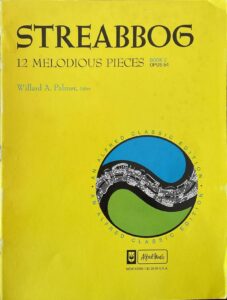 |
|
| Stride & Swing Piano The Complete Guide |
 |
Stride & Swing Piano Stride & Swing Piano – The Complete Guide |
| Studio Ghibli Guitar Arrangements Best Album (Joe Hisaishi & Hayao Miyazaki) with Tablature |
 |
|
| Studio Ghibli Piano Suite |
 |
|
| Styx – Babe | ||
| Styx – Come Sail Away |
 |
|
| Succar Ya Banat (Caramel OST) Rasha Rizk | ||
| Suis-moi – Le Petit Prince OST (Hans Zimmer – Camille) | ||
| Sum 41 – Pieces | ||
| Summer of ’42 (Michel Legrand) | ||
| Summer of ’42 The Summer Knows Michel Legrand Piano & Voice |
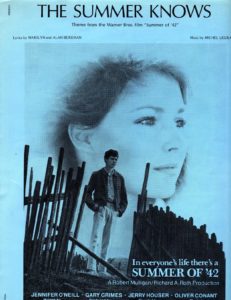 |
Summer of ’42 The Summer Knows Michel Legrand Piano & Voice |
| SUMMER OF’42 THE SUMMER KNOWS Piano (another version) | THE SUMMER KNOWS -SUMMER OF’42 | |
| Summertime – Piano arrangement Pianos Of Cha’n |
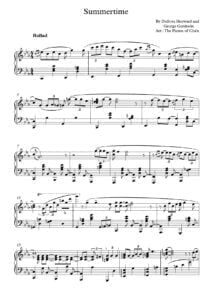 |
|
| Summertime G. Gershwin |
 |
|
| Sun Ra sheet music Collection | 1 Sun Ra index sheet music | |
| Sunday Music (100 Arrangements For Piano Solo) E. Pauer |
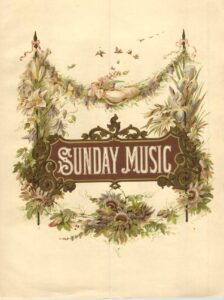 |
Sunday Music (100 Arrangements For Piano Solo) E. Pauer |
| Sunrise on Pontchartrain (The Curious Case of Benjamin Button OST) Alexandre Desplat | Sunrise on Pontchartrain | |
| Super Junior Pajama Party |
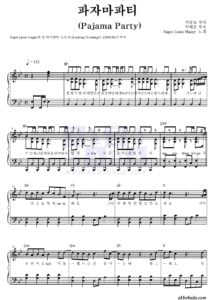 |
|
| Super Mario 64 – dire,dire docks |
 |
|
| Super Mario 64 by Koji Kondo – Piano |
 |
|
| Super Mario Bros – Main Theme | Super Mario Bros – Main Theme | |
| Super Mario Bros – Main Theme Overworld |
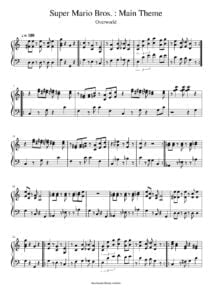 |
|
| Super Mario Bros – Main Theme Overworld (Musescore File).mscz | ||
| Super Mario Bros – Mario Main Theme – Koji Kondo | ||
| Super Mario Bros 2 Overworld Theme by Koji Kondo Piano Solo |
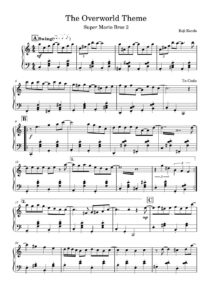 |
|
| Super Mario Bros 2 Complete Piano Arrangement |
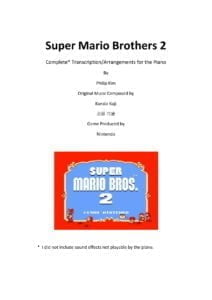 |
|
| Super Mario Bros Overworld Main Theme sheet music |
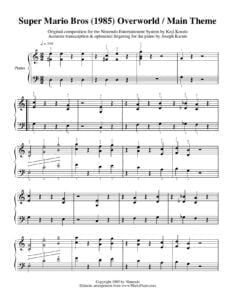 |
|
| Super Mario Bros Songbook |
 |
|
| Super Mario Bros. 3 Don’t stand on the Donuts – Piano Sheet Music |
 |
|
| Super Mario Galaxy – Aquatic Race |
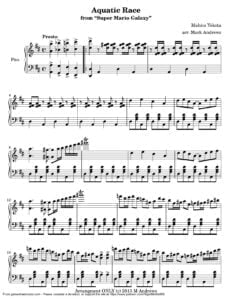 |
|
| Super Mario Galaxy – Attack! Koopas Fleet |
 |
|
| Super Mario Galaxy – Catastrophe |
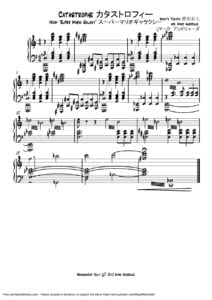 |
|
| Super Mario Galaxy – File Select |
 |
|
| Super Mario Galaxy – King Koopa’s Entrance |
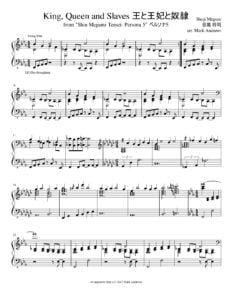 |
|
| Super Mario Galaxy – Kinopio’s Expedition |
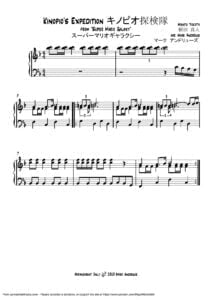 |
|
| Super Mario Galaxy – Overture |
 |
|
| Super Mario Galaxy – Peachs Castle is Stolen |
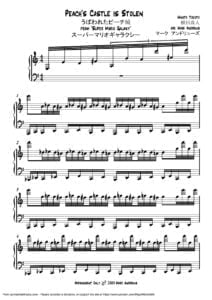 |
|
| Super Mario Galaxy – Rosetta’s Comet Observatory I |
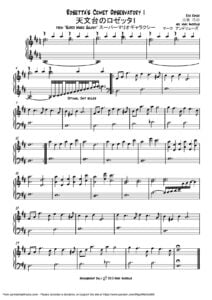 |
|
| Super Mario Galaxy – Starbit Festival |
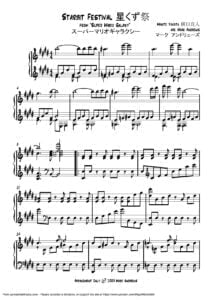 |
|
| Super Mario Galaxy Complete Sheet Music |
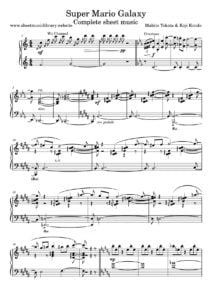 |
|
| Super Mario Galaxy Sheet Music (Musescore File).mscz | ||
| Super Mario Land – Birabuto Kingdom by Hirokazu Tamaka |
 |
|
| Super Mario World 2 Yoshis Island – Athletic |
 |
|
| Super Solos for Acoustic Guitar Solos (by Johnny Norris) Fingerpicking with Tablature |
 |
Super Solos for Acoustic Guitar Solos (by Johnny Norris) Fingerpicking with Tablature |
| Super Top Ten Volume (Guitar) |
 |
Super Top Ten Volume (Guitar) |
| Supercell – Sayonara Memories |
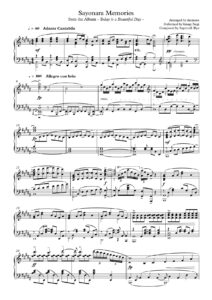 |
|
| Superhero Themes 14 of Your Favorite Heroes and She-Roes |
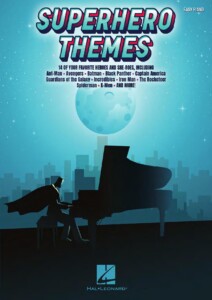 |
Superhero Themes 14 of Your Favorite Heroes and She-Roes |
| Superman Theme For Piano |
 |
|
| Supertramp – Breakfast In America |
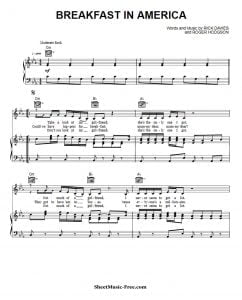 |
Supertramp Breakfast In America Book |
| Supertramp – Logical Song | ||
| Supertramp Anthology Songbook |
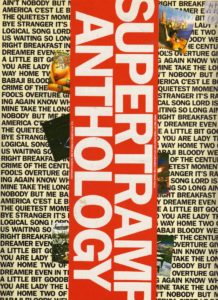 |
Supertramp Anthology Songbook |
| Supertramp Breakfast In America SongBook |
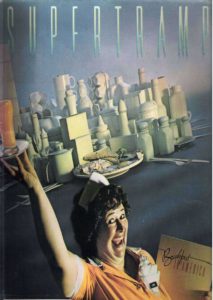 |
Supertramp Breakfast In America Book |
| Supertramp Crisis What Crisis SongBook |
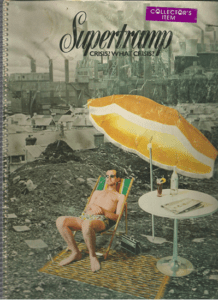 |
 |
| Supertramp Even In The Quietest Moments Songbook |
 |
Supertramp Even In The Quietest Moments |
| Supertramp Famous Last Words SongBook |
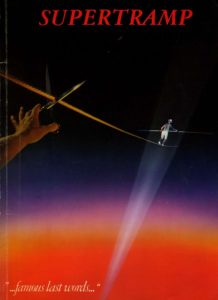 |
Supertramp Famous Last Words Book |
| Supertramp Paris SongBook |
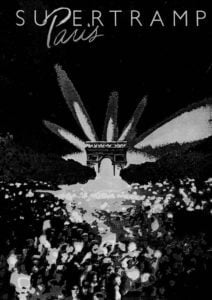 |
Supertramp Paris Book |
| Surface Pressure – Encanto (sheet music).mscz | ||
| Suzanne Ciani Adagio | Suzanne Ciani Adagio | |
| Suzanne Ciani Dream Songs for piano |
 |
Suzanne Ciani Dream Songs piano |
| Suzanne Ciani New Age Piano |
 |
Suzanne Ciani New Age Piano |
| Suzanne Vega Songbook |
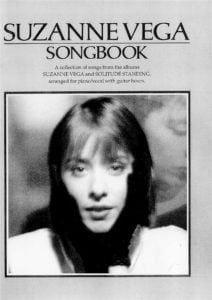 |
Suzanne Vega Songbook |
| SUZUKI – Guitar School Revised Edition (Vol 1) |
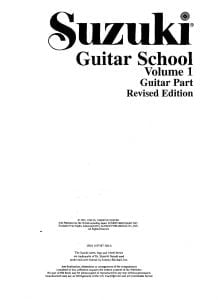 |
SUZUKI – Guitar School Revised Edition (Vol 1) |
| Suzuki Guitar (Complete Vol. 1 To 9) |
 |
SUZUKI GUITAR Vol 1-9 |
| Suzuki Piano School – Vol 07 – Mozart Handel and Paderevski |
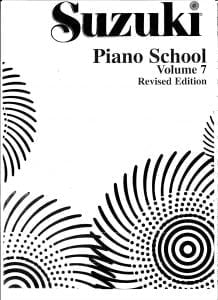 |
|
| Suzuki Piano School Volumes 1 to 7 (240 p.) |
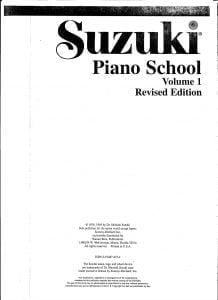 |
Suzuki 1-7 – Piano School (7 books) |
| Suzuki Tsunekichi – Omohi De – Irish Folk Song Opening Theme To The Netflix Series Midnight Diner Tokyo Stories) (Musescore File).mscz | ||
| Suzuki Tsunekichi – Omohi de – Irish Folk Song Opening theme to the Netflix series Midnight Diner Tokyo Stories) Guitar | Suzuki Tsunekichi – Omohi de – Irish Folk Song Opening theme to the Netflix series Midnight Diner Tokyo Stories) Guitar | |
| Sveinn Eythorsson – Easy Guitar Songs |
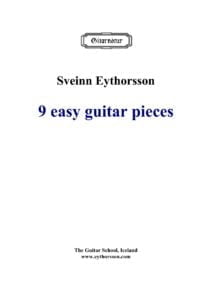 |
|
| Swan Lake Theme – Tchaikovsky (Musescore File).mscz | ||
| Swanee River Boogie Woogie – Albert Ammons (Musescore File).mscz | ||
| Sweet Hour Of Prayer – Piano Solo arr. of 13 Sacred Songs by Marvin Goldstein |
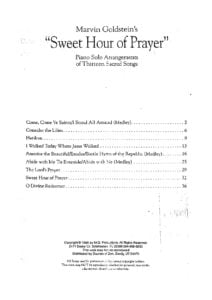 |
|
| Swing And Early Progressive Piano Styles Jazz Improvisation 3 by John Mehegam |
 |
Swing And Early Progressive Piano Styles Jazz Improvisation 3 by John Mehegam |
| Swing Low Sweet Charriot (Musescore File).mscz | ||
| Sydney Bechet Si Tu Vois Ma Mere Lead sheet music GUITAR CHORDS |
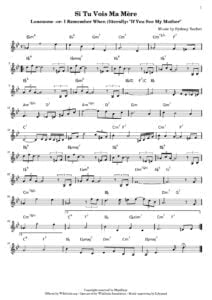 |
|
| Symphony No 40 In Gm K550 (Musescore File).mscz | ||
| Symphony No 9 In E Minor (From The New World) For Piano – 1st Movement (Adagio – Allegro Molto) (Musescore File).mscz | ||
| Symphony No 9 In E Minor (From The New World) For Piano – 2nd Movement (Largo) (Musescore File).mscz | ||
| Symphony No 9 In E Minor 4th Mov. (From The New World) A. Dvorak (Musescore File).mscz | ||
| Symphony No. 2 Third Mov. Advanced Piano Arr. (Musescore File).mscz | ||
| Symphony No. 5 – Adagietto Gustav Mahler (Musescore File).mscz | ||
| System Of A Down – Lonely Day | ||
| T – Pain – Buy You A Drink | ||
| T.Koehler-H.Arlen – Stormy Weather (arr. A.Tatum) | T.Koehler-H.Arlen – Stormy Weather (arr. A.Tatum) | |
| Table for Two – Nocturnal Animals OST (Abel Korzeniowski) | ||
| Takashi Yoshimatsu – Piano Folio … To a disappeared pleiad | ||
| Take Five (Musescore File).mscz | ||
| Take Five by Paul Desmond Jazz Play Along |
 |
|
| Take Five Guitar by Chet Atkins.mscz | ||
| Take Five Jazz Standard by Paul Desmond arranged for Guitar by Chet Atkins with Tablature TABs | Take Five Jazz Standard by Paul Desmond arranged for Guitar by Chet Atkins with Tablature | |
| Take Five Jazz Standard Paul Desmond Dave Brubeck arr. Carsten Gerlitz |
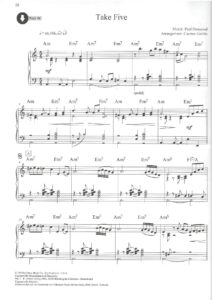 |
|
| Take Me To The Land Of Jazz by Pete Wendling (1919) |
 |
|
| Take That – Could It Be Magic | ||
| Take That – How Deep Is Your Love | Take That – how deep is your love | |
| Takemisu, Toru – 12 Songs for guitar |
 |
|
| Takemitsu – Secret Love Guitar with TABs |
 |
|
| Tales Of Earthsea Teeru No Uta Kashuu Baajon Taniyama Hiroko Miyazaki Tomochika |
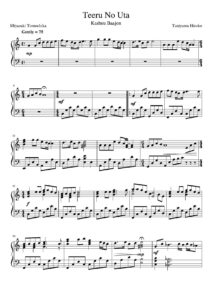 |
|
| Talking Heads Anthology |
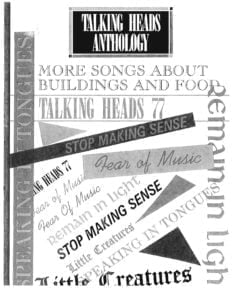 |
Talking Heads Anthology |
| Tangled – Alan Menken OST |
 |
Alan Menken – Tangled (Disney) Rapunzel songbook |
| Tango El Caramel (Khaled Mouzanar) | ||
| Tango Fake Book |
 |
Tango Fake Book |
| Tangos And More (Intermediate Piano Solos) |
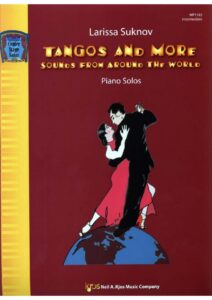 |
Tangos And More (Intermediate Piano Solos) |
| Tangos Para Guitarra |
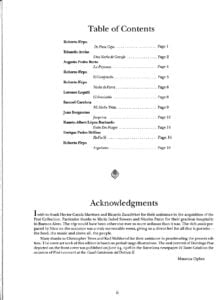 |
Tangos |
| Tania Maria Yatra Ta |
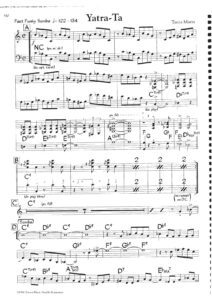 |
